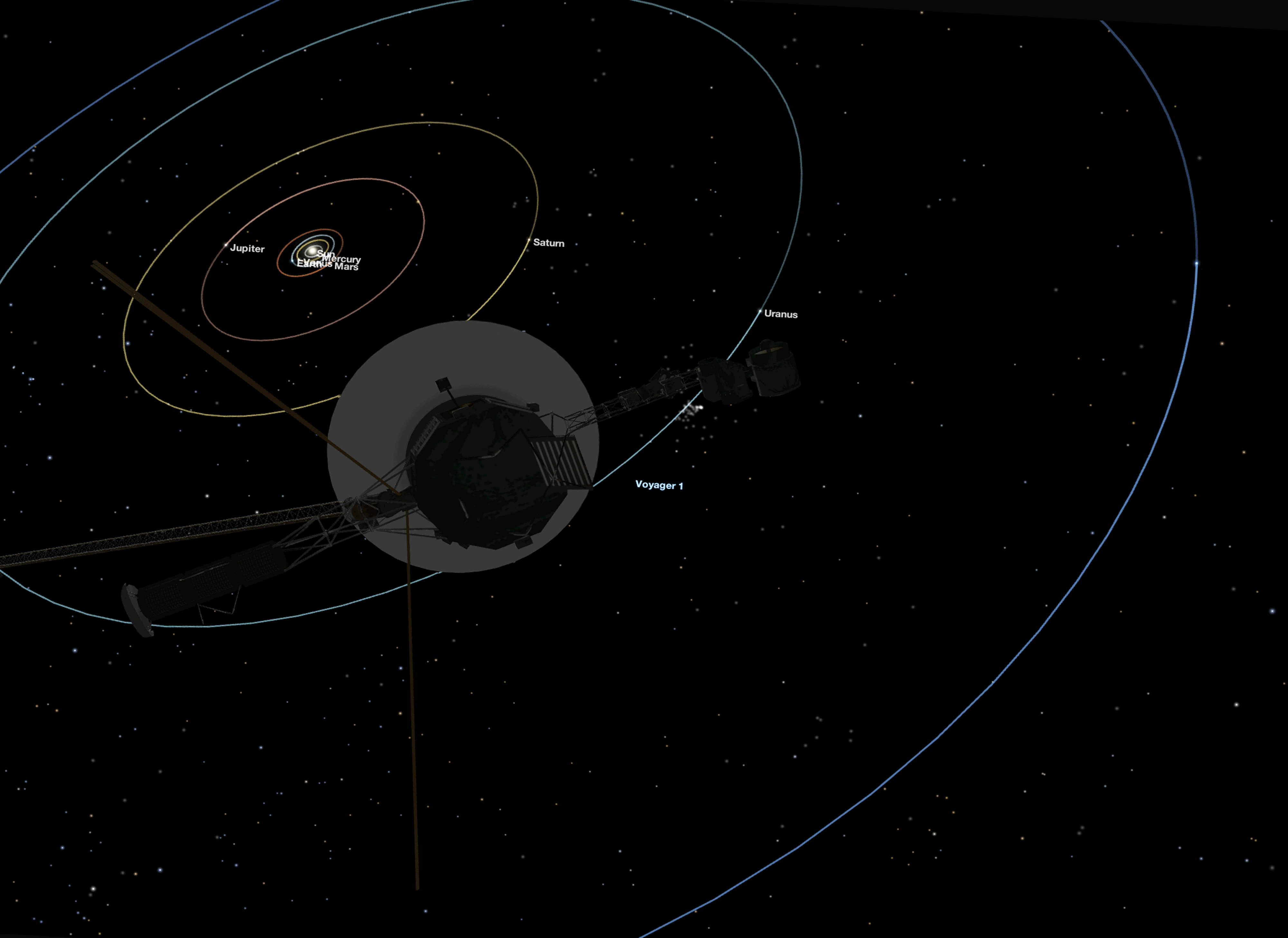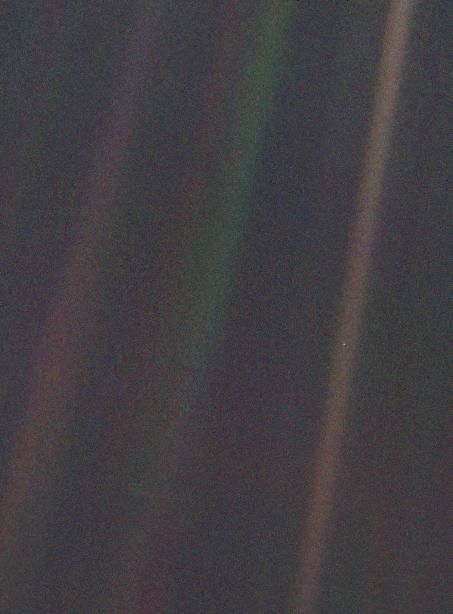Thirty-five years ago, on February 14, 1990, the Voyager 1 probe took its last series of photographs. The mission has completed its goal of traveling across the Solar System to see Jupiter and Saturn. Launched in 1977, it encountered the king of the planets in January 1979, and 21 months later, it flew by the lord of the rings itself. It continues to fly today past the formal confines of the Solar System, but it’s the story of its last photograph that saw Earth put in a whole new perspective.
ADVERTISEMENT GO AD FREE
Astronomer and science communicator Carl Sagan had been petitioning NASA to turn Voyager’s camera back on the planets from its vantage point in the outer Solar System. On February 14, 1990, just before the camera was turned off for good, Sagan’s wish was granted. Voyager snapped 60 photographs, taken at a distance of about 6 billion kilometers from Earth (3.7 billion miles). Together, they made up what was called the “Family Portrait“.

The Family Portrait series and what Voyager 1 was looking at.
Image credit: NASA/JPL
Due to positioning or camera limitations, only six planets were visible in the photo: Venus, Earth, Jupiter, Saturn, Uranus, and Neptune. Earth is less than one pixel in the photo – 0.12 pixels, according to NASA – and it appeared framed in a sunbeam, the latter an artifact of the camera. The image of our planet was dubbed the “Pale Blue Dot”, and this photograph and the book by Carl Sagan that it inspired became an iconic image of the fragility and uniqueness of our place in the cosmos.
“Look again at that dot. That’s here. That’s home. That’s us. On it everyone you love, everyone you know, everyone you ever heard of, every human being who ever was, lived out their lives. The aggregate of our joy and suffering, thousands of confident religions, ideologies, and economic doctrines, every hunter and forager, every hero and coward, every creator and destroyer of civilization, every king and peasant, every young couple in love, every mother and father, hopeful child, inventor and explorer, every teacher of morals, every corrupt politician, every “superstar,” every “supreme leader,” every saint and sinner in the history of our species lived there – on a mote of dust suspended in a sunbeam.” Carl Sagan – Pale Blue Dot: A Vision of the Human Future in Space (1994)
In his book, Sagan juxtaposed just how tiny our little corner of the universe is with the bloodthirstiness of generals and governments. How futile the cruelties we impart upon each other, our hatred, our violence.
Since the time of the iconic photograph and book, humanity has discovered over 5,000 exoplanets and many more candidate worlds beyond the Solar System. But 35 years on, Sagan’s words on life beyond Earth continue to be correct.

The original Pale Blue Dot, with Earth highlighted by a sunbeam.
Image credit: NASA/JPL-Caltech
“The Earth is the only world known so far to harbor life. There is nowhere else, at least in the near future, to which our species could migrate. Visit, yes. Settle, not yet. Like it or not, for the moment the Earth is where we make our stand.” Carl Sagan – Pale Blue Dot: A Vision of the Human Future in Space (1994)
Despite the promises of billionaires, humanity is not yet ready to face the challenges that settling another world, such as Mars, would entail. There remains a lack of basic scientific research into what that would be like – it is not just about rockets getting to another world.
Five years ago, NASA provided an updated version of the Pale Blue Dot. JPL engineer Kevin M Gill reprocessed the image with modern tools but following the original approach, even receiving inputs from Candy Hansen and William Kosmann, who were involved in the original. The final result is a sharper, but still faithful view.
The power of this image lives on. Voyager 1 is still going strong, over four times further away than when it took those iconic images. The Pale Blue Dot has also changed, but humanity might not have assimilated its lessons quite yet.
ADVERTISEMENT GO AD FREE
“It has been said that astronomy is a humbling and character-building experience. There is perhaps no better demonstration of the folly of human conceits than this distant image of our tiny world. To me, it underscores our responsibility to deal more kindly with one another, and to preserve and cherish the pale blue dot, the only home we’ve ever known.” Carl Sagan – Pale Blue Dot: A Vision of the Human Future in Space (1994)
Source Link: The Pale Blue Dot At 35: The Making Of An Iconic Photo